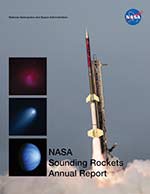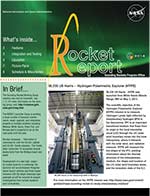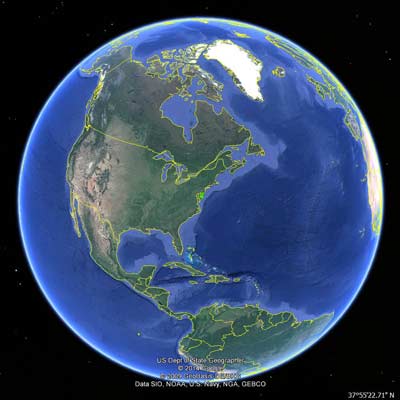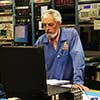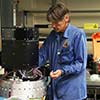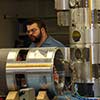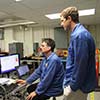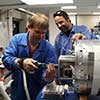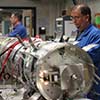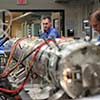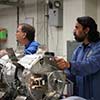
36.310 GT HESH/NASA WFF
- Mission
- Vehicle
- Launch
- Photos
This NASA technology test mission’s primary goal is to fully test and characterize the new Black Brant Mk4 motor in a sounding rocket vehicle configuration. This will be the first flight test of the next Mk4 version of the Black Brant rocket motor.
Additionally the mission provides NASA and NSROC an opportunity to test new technology experiments as well as further develop rocket propelled sub-payload ejection technology for the Sounding Rockets Program.
The NSROC technologies flying on this mission include:
• HD Camera System
• Quasonix transmitter (SOQPSK)
• Kulite pressure transducers
• Ampule Control Module (ACM) with rocket propelled sub-payload ejection
• Vehicle diagnostics package
Two new technologies, the Advanced Near Net Shape Technology (ANNST) experiment and a materials testing experiment with Orbital ATK, sponsored by the NASA Game Changing Office, are also onboard.
NASA Kennedy Space Center, in a partnership with NASA GSFC Wallops Flight Facility and DARPA is flying the Autonomous Flight Safety System (AFSS) and LCT2 (TDRSS).
The objective of the Advanced Near Net Shape Technology (ANNST) project is to develop and mature manufacturing technology to enable fabrication of single-piece integrally-stiffened launch vehicle structures to replace expensive, heavy, and risky multi-piece welded assemblies. The project seeks to develop and adapt manufacturing technology currently used in production of small steel automotive parts to enable fabrication of single-piece stiffened metallic launch vehicle structures using aerospace grade aluminum-lithium (Al-Li) alloys. The novel integrally stiffened cylinder (ISC) process will improve manufacturing efficiency and structural performance by producing single-piece stiffened barrels in one manufacturing process through combined spin- and flow-forming operations. Such a technique has never before been applied to launch vehicle structures. A 25” flow formed aluminum skin replacing the standard NSROC Ogive Recovery System Assembly (ORSA) adapter will be flown on this mission.
The NASA and Orbital ATK experiment consist of advanced materials in three different designs and configurations for evaluation of radiation and thermal heat shields, ultra-lightweight structure design, and carbon based conductive wire. The experiment is configured into three major sections. A conical structure for a payload adapter, two sections representing cube or small satellite dimensions with panel of various material. The volume in the two sections is used to house
instrumentation electronics and sensors.
The Autonomous Flight Safety System (AFSS) is a joint effort by NASA’s Wallops Flight Facility (WFF) and Kennedy Space Center (KSC) to develop an autonomous onboard system that can augment or replace the function of the traditional ground commanded system.
The AFSS is an independent self-contained subsystem mounted onboard a launch vehicle. The system autonomously makes flight termination / destruct decisions using configurable software-based rules implemented on redundant flight processors using data from redundant GPS/IMU navigation sensors.
The final goal is an independent self-contained subsystem mounted onboard a launch vehicle or UAV, with no requirement for command or telemetry.
The Low Cost Transmitter (LCT) 2 is a WFF project to enable a launch vehicle to communicate via satellite rather than line of sight TM. Although AFSS can act autonomously, it is anticipated that data to evaluate its actions will be required. LCT2 provides bi-directional communication through NASA's Tracking and Data Relay Satellite System (TDRSS) that meets suborbital and orbital launch vehicle needs for Space Based Range (SBR) communications.
The Black Brant 9 is a two stage sounding rocket with a Terrier first stage and Black Brant second stage. The Black Brant 9 can reach altitudes of about 600 km. Payloads weighing from 400 to 1200 pounds can be flown.
Additional sounding rocket vehicles

